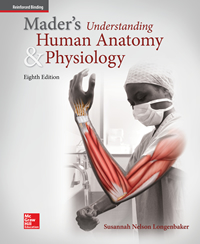1 A) blastocyst B) oocyte C) egg D) zygote 2 A) flagellum. B) acrosome. C) middle piece. D) corona radiata. 3 A) corona radiata. B) plasma membrane. C) zona pellucida. D) acrosome. 4 A) uterus. B) uterine tube (oviduct). C) vagina. D) abdominal cavity. 5 A) corona radiata – ovum – zona pellucida B) ovum – corona radiata – zona pellucida C) ovum – zona pellucida – corona radiate D) zona pellucida – ovum – corona radiata 6 A) corona radiata B) endometrium C) trophoblast D) zona pellucida 7 A) All the other sperm die. B) The ovum's plasma membrane depolarizes. C) The zona pellucida lifts away from the ovum's plasma membrane. D) Both B and C. 8 A) 1 – 3 – 2 – 6 – 5 - 4 B) 3 – 1 – 6 – 5 – 2 – 4 C) 3 - 1 – 6 - 5 – 4 – 2 D) 6 – 3 – 1 – 5 - 4 - 2 9 A) cleavage. B) cytokinesis. C) differentiation. D) morphogenesis. 10 A) cleavage. B) growth. C) morphogenesis. D) differentiation. 11 A) cleavage. B) growth. C) morphogenesis. D) differentiation. 12 A) blastocyst B) clevage C) embryo D) morula 13 A) cleavage. B) growth. C) morphogenesis. D) differentiation. 14 A) allantois B) amnion C) chorion D) yolk sac 15 A) allantois B) amnion C) chorion D) yolk sac 16 A) allantois B) amnion C) chorion D) yolk sac 17 A) chorion. B) embryo. C) placenta 18 A) fertilization to the first week B) fertilization to birth C) the second week through the second month D) third month through the ninth month 19 A) first week B) second through eighth weeks C) third through ninth weeks D) third through ninth months 20 A) Blastocyst, zygote, morula, cleavage B) Cleavage, blastocyst, morula, zygote C) Zygote, cleavage, blastocyst, morula D) Zygote, cleavage, morula, blastocyst 21 A) digests the endometrium of the uterus. B) starts morphogenesis of the embryo C) maintains the corpus luteum D) produces the amnionic fluid 22 A) first day B) second day C) seventh day D) fourteenth day 23 A) fetus B) embryo C) morula D) zygote 24 A) progesterone B) FSH C) oxytocin D) testosterone 25 A) Ectoderm, epiderm and endoderm B) Endoderm, mesoderm and ectoderm C) Epiderm, mesoderm and ectoderm D) Epiderm, endoderm and mesoderm 26 A) fetus B) placenta C) primary germ layers D) umbilical cord 27 A) estrogen B) gastrin C) human chorionic gonadotropin D) oxytocin 28 A) nervous system B) epidermis of the skin C) lining of the digestive tract D) linings of the mouth and rectum 29 A) liver B) bones C) cardiovascular system D) muscles 30 A) ectoderm B) mesoderm C) endoderm D) epiderm 31 A) cardiovascular B) nervous C) integumentary D) digestive 32 A) 3rd B) 5th C) 6th D) 8th 33 A) 4th B) 5th C) 6th D) 7th 34 A) 5th B) 6th C) 7th D) 8th 35 A) ovary B) fetus (after third month) C) placenta D) uterus 36 A) 1st week B) 2nd through 8th weeks C) 3rd through 9th weeks D) 3rd through 9th months 37 A) provides nutrients for the fetus B) removes wastes for the fetus C) produces estrogen and progesterone D) exchanges oxygen and carbon dioxide E) All of the above are functions of the placenta 38 A) 1; 1 B) 1: 2 C) 2: 1 D) 2; 2 39 A) Fetal tissue B) Maternal tissue C) Both fetal and maternal tissue 40 A) lanugo. B) vernix caseosa. C) vellus hair. D) terminal hair. 41 A) lanugo. B) vernix caseosa. C) fontanels D) terminal hair. 42 A) lanugo. B) vernix caseosa. C) fontanels D) terminal hairs 43 A) XX B) XY 44 A) hCG B) testosterone C) oxytocin D) FSH 45 A) absence of estrogen; presences of estrogen B) absence of progesterone; presence of progesterone C) presence of testosterone; absences of testosterone D) presence of testosterone; presence of estrogen 46 A) female: absence of testosterone B) female: presence of estrogen C) male: absence of estrogen D) male: presence of testosterone 47 A) female: absence of testosterone B) female: presence of estrogen C) male: absence of estrogen D) male: presence of testosterone 48 A) effacement B) water breaks C) baby's head descends into the vagina D) complete dilation of the cervix 49 A) 40% increase in vital capacity and tidal volume B) blood volume decreases C) heartburn D) increased weight 50 A) Decreases uterine contractions B) Increases insulin resistance C) Increases production of red blood cells D) Increases cardiac output





